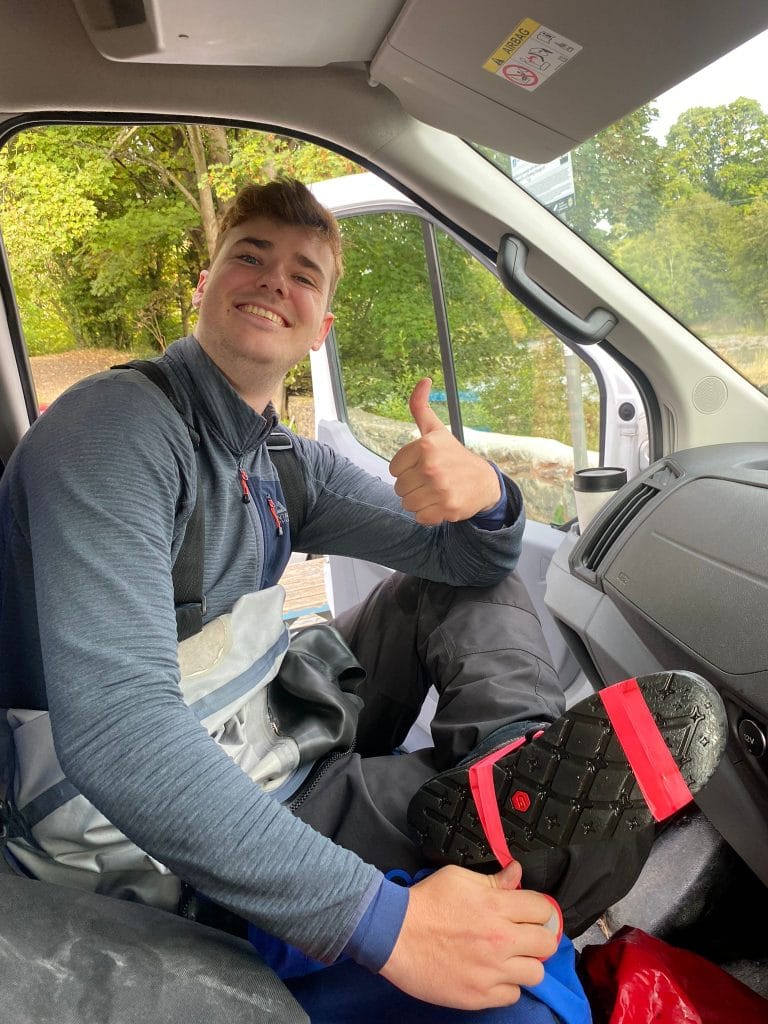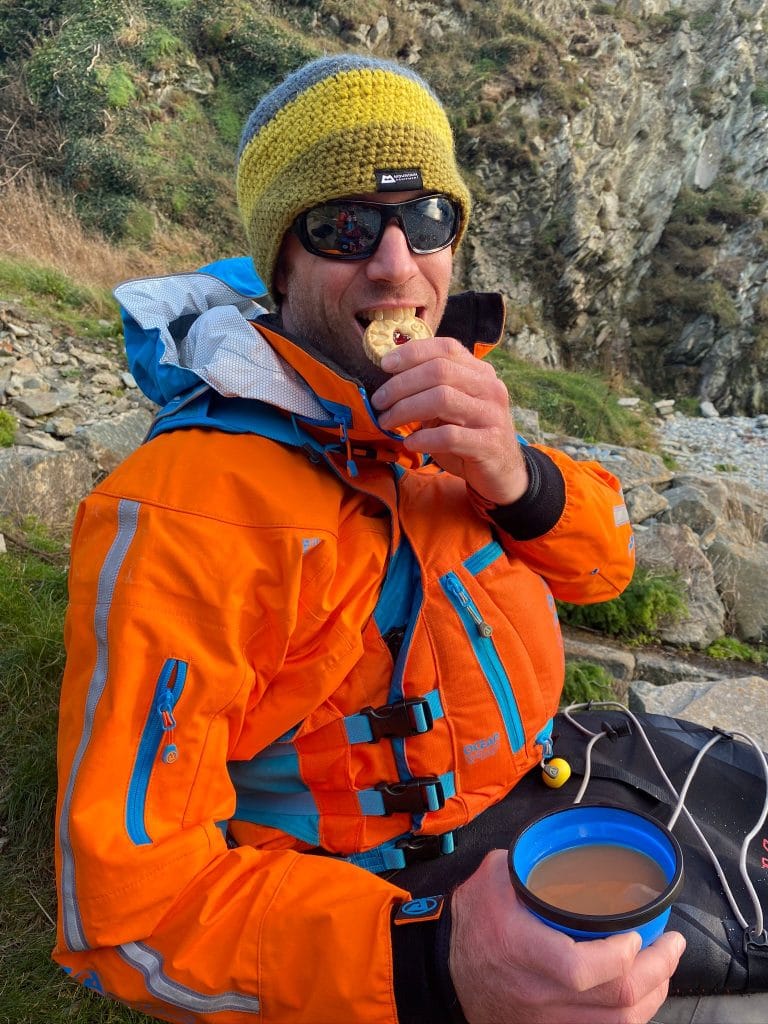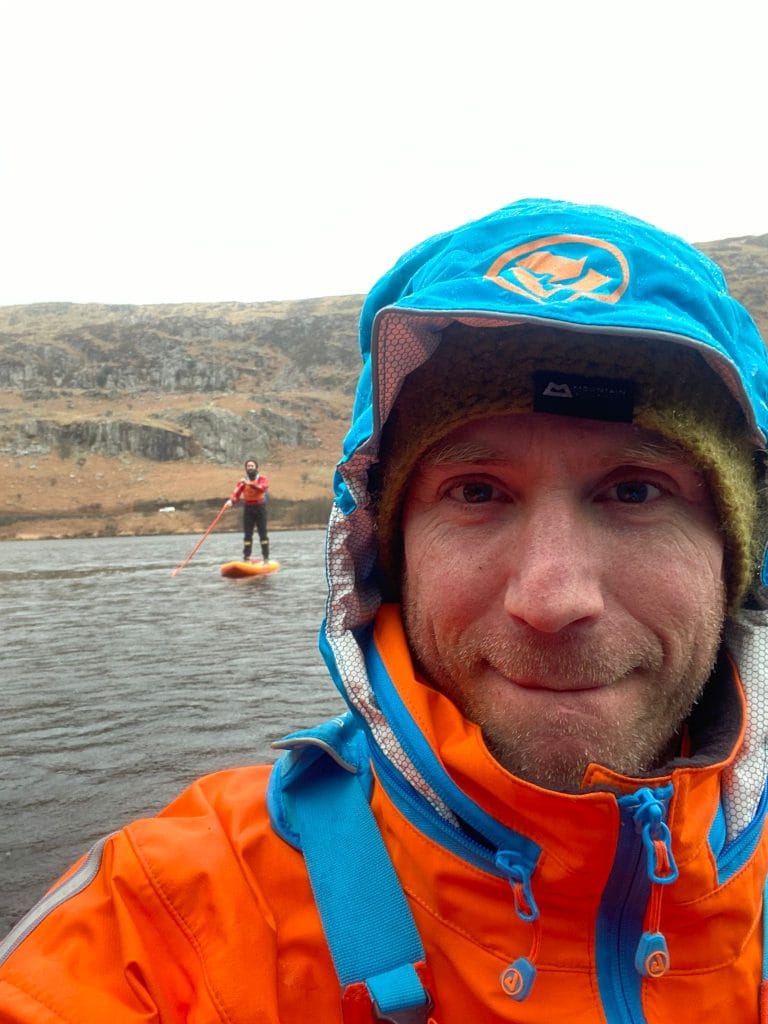Being cold sucks! There’s nothing more miserable than the sting of the cold hitting your hands making your fingers throb or being so unbearably cold that you just can’t focus. Here are 10 top tips for staying warm on the water, from our Senior Paddlesport Instructor, Chris Evans:
I’ve been on the sea in perfect flat calm northerly winter conditions, bringing little to no wind and breathtaking views. I could take this all in because I was warm enough. I’ve also had days on the water that were memorable for the wrong reasons, I didn’t want to be paddling because I was painfully cold due to incorrect layering, fuel or neglecting extremities.
Here are a few suggestions to avoid the sting of the cold and enjoy paddling in all seasons.
1 Get your layering right!
Do you naturally run hot or cold? More layers if you run cold, fewer if you run hot.
2 Don’t forget your feet!
It’s our natural connection point to the earth underneath us, so make sure there’s adequate insulation from the ground temperature as well as enough ankle and foot support for the environment.

3 How much are you doing during your paddling session?
A sprint-around, training session will need fewer layers than a social float. I find I need more layers when coaching than I do when personal paddling for example, as I spend more time sitting around.

4 Fuel up properly
On the coldest of cold days, think about hot food and drink rather than the buoyancy aid Mars Bars (other confectionery is available) that may have frozen. I’ve heard horror stories of dental work needing doing after a frozen BA chocolate bar! This could either be for when you’re off the water (only out for a short period of time) or in flasks with you.

5 Stop in sheltered spots
An obvious one (however I do still see it), is it’s colder in the wind than it is out. Finding that sheltered spot to have your above-warm lunch is always a winner (under a canoe works quite well).
6 Keep the blood flowing to the extremities
We’ve all felt the loss of dexterity in digits due to the cold and have all then tried to do a simple task like opening a zip. That stinging sensation can be avoided with simple movements of the extremities to minimise the loss of blood flow. ‘Shaking out the cold’ or ‘playing the piano’ works quite well.
7 One way of keeping the dexterity in your fingers is to use gloves or pogies
My preference here is pogies, as you can keep a natural connection and feel to your paddle with the pogie creating its own ecosystem. I do find them clumsy on the river, so I slide them into the middle of the paddle when it gets technical and put them on when the river chills out.
8 A helmet with holes in is much colder than one without, if yours is one with vents then think about a neoprene skull cap
Woolie hats when a helmet isn’t needed are a must on cold days and they drown out the mocking calls of the stubborn who believe that they don’t need pogies….

9 Get changed in the warm and dry
Putting on at least your thermals at home means you’re minimising the time spent changing in car parks, arguably the hardest part of paddling in cold conditions.
10 Carry spare layers if you’re out for the day
Consider a go layer and a stop layer. Go layer is one to add if you’re still moving and the stop layer needs to be substantial enough to keep you warm if you have to stop for an extended period of time. Boat fixing for example.

We hope you found Chris’ tips useful. For more advice and the latest paddle news, make sure to sign up to our paddle newsletter and follow our paddlesports Instagram! You can also learn all about our courses here, from introductory courses all the way through to NGB.
Special thanks to our incredible sponsors, Peak PS, who help keep our instructors warm on the water.

